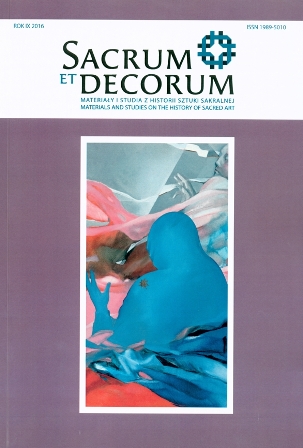Metafizyka – symbol – pejzaż. Przyczynek do badań nad obrazami Caspara Davida Friedricha z motywem ruiny
Metaphysics – symbol – landscape. On the motif of ruins in Caspar David Friedrich’s painting.
Author(s): Michał HaakeSubject(s): Christian Theology and Religion, Fine Arts / Performing Arts, Sociology of Religion
Published by: Wydawnictwo Uniwersytetu Rzeszowskiego
Keywords: Caspar David Friedrich; symbol; Romanticism; ruin
Summary/Abstract: The article proposes a new reading of the symbolic and metaphysical meaning of three paintings by Caspar David Friedrich with the motif of church ruins. The restoration of The Abbey in the Oakwood of 1809, carried out between 2013 and 2015, proved of particularly great help in this respect. The article is a polemic against interpretations that choose to depart from the symbolism of individual motifs. Instead, the author argues, the basis for symbolism should be sought in the structural relations that connect individual elements, i.e. the visual form of the painting. Accordingly, in consonance with the way symbols were understood after 1800, symbolism is seen as being linked to the sensory aspect of the symbolizing object. In addition, the ability of symbols to send off towards the extrasensory, the ideal, and the transcendent is rooted in the relationship between the world depicted in the paintings (a collection of motifs distributed in space) and the plane of the painting, understood, following the existential hermeneutic theory of art, as a value that is experienced in the process of perception, but is distinct from the depicted world and transcends it.
Journal: Sacrum et Decorum. Materiały i studia z historii sztuki sakralnej
- Issue Year: 2016
- Issue No: 9
- Page Range: 19-37
- Page Count: 19
- Language: English, Polish

